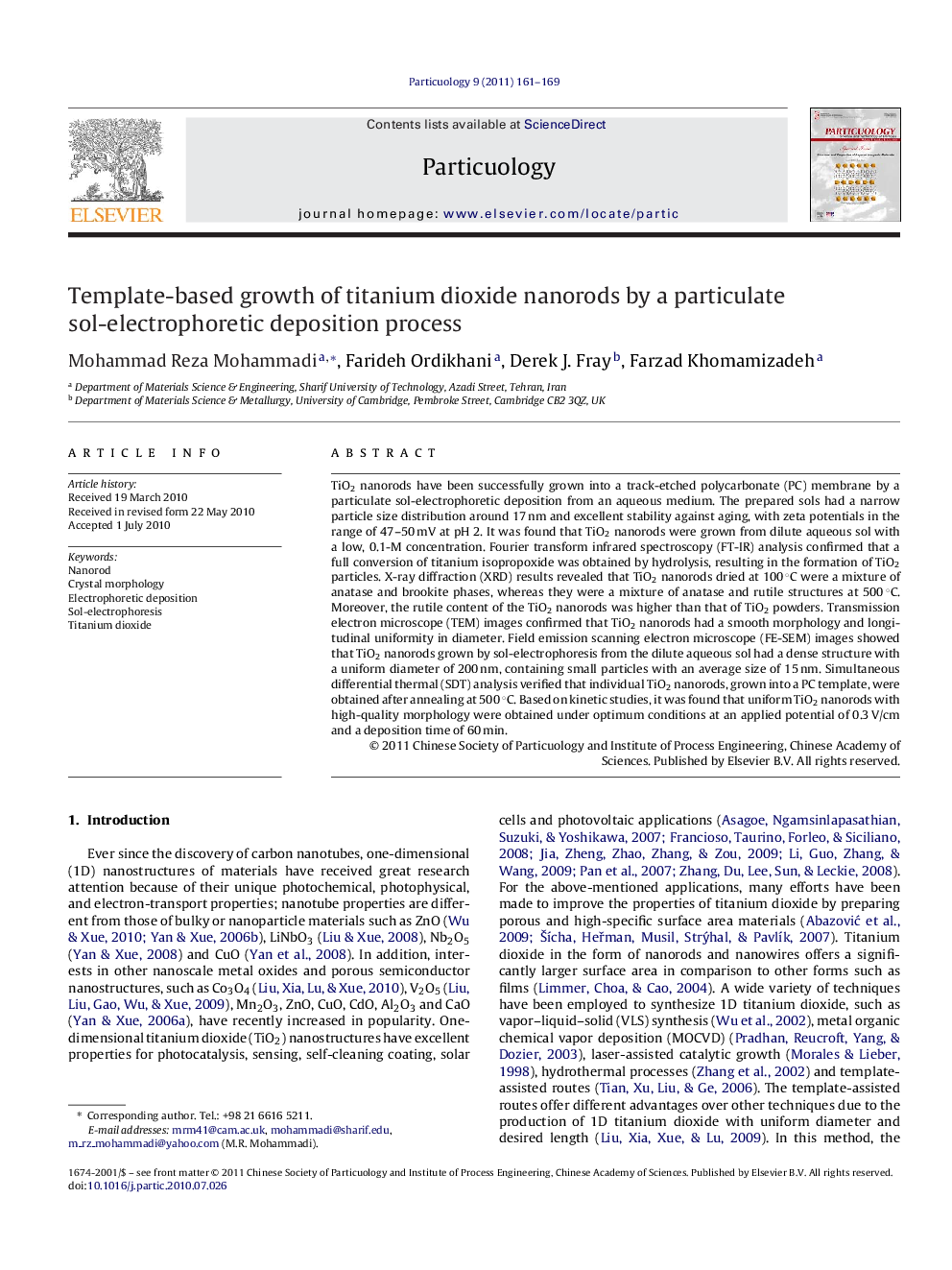| Article ID | Journal | Published Year | Pages | File Type |
|---|---|---|---|---|
| 672524 | Particuology | 2011 | 9 Pages |
TiO2 nanorods have been successfully grown into a track-etched polycarbonate (PC) membrane by a particulate sol-electrophoretic deposition from an aqueous medium. The prepared sols had a narrow particle size distribution around 17 nm and excellent stability against aging, with zeta potentials in the range of 47–50 mV at pH 2. It was found that TiO2 nanorods were grown from dilute aqueous sol with a low, 0.1-M concentration. Fourier transform infrared spectroscopy (FT-IR) analysis confirmed that a full conversion of titanium isopropoxide was obtained by hydrolysis, resulting in the formation of TiO2 particles. X-ray diffraction (XRD) results revealed that TiO2 nanorods dried at 100 °C were a mixture of anatase and brookite phases, whereas they were a mixture of anatase and rutile structures at 500 °C. Moreover, the rutile content of the TiO2 nanorods was higher than that of TiO2 powders. Transmission electron microscope (TEM) images confirmed that TiO2 nanorods had a smooth morphology and longitudinal uniformity in diameter. Field emission scanning electron microscope (FE-SEM) images showed that TiO2 nanorods grown by sol-electrophoresis from the dilute aqueous sol had a dense structure with a uniform diameter of 200 nm, containing small particles with an average size of 15 nm. Simultaneous differential thermal (SDT) analysis verified that individual TiO2 nanorods, grown into a PC template, were obtained after annealing at 500 °C. Based on kinetic studies, it was found that uniform TiO2 nanorods with high-quality morphology were obtained under optimum conditions at an applied potential of 0.3 V/cm and a deposition time of 60 min.
Graphical abstractUniform TiO2 nanorods with high-quality morphology were obtained from aqueous sol with 0.1-M TiO2 at an applied potential of 0.3 V/cm and a deposition time of 60 min. The crystallization of TiO2 nanorods of anatase phase occurred at 100 °C, and the rutile phase formed at 350 °C.Figure optionsDownload full-size imageDownload as PowerPoint slide
